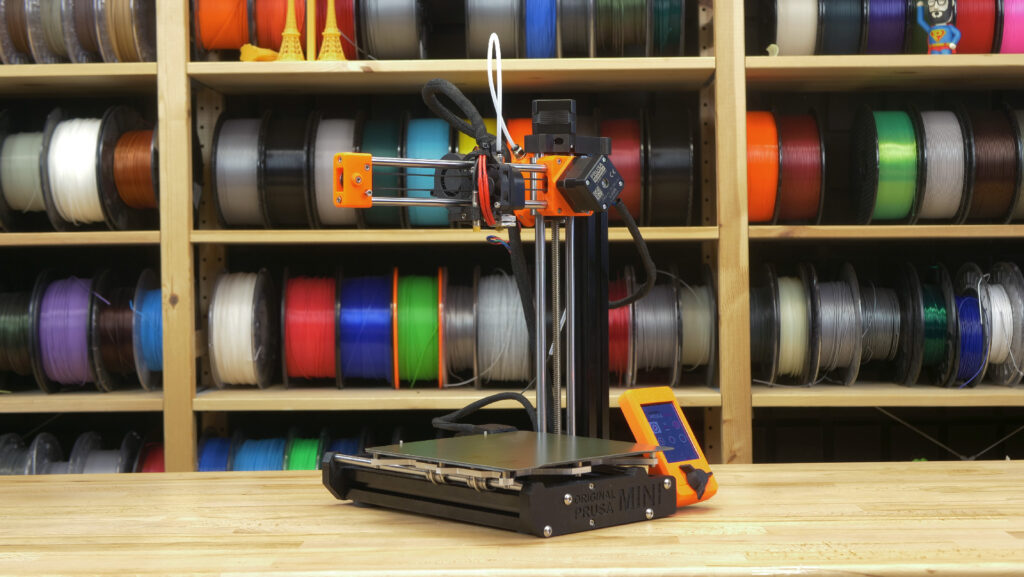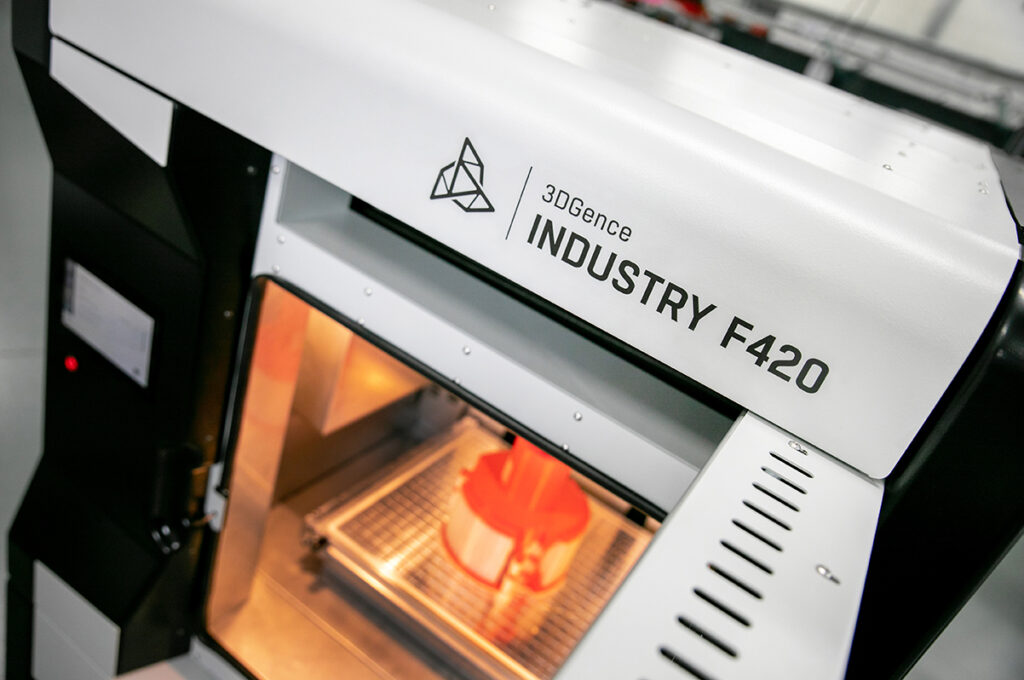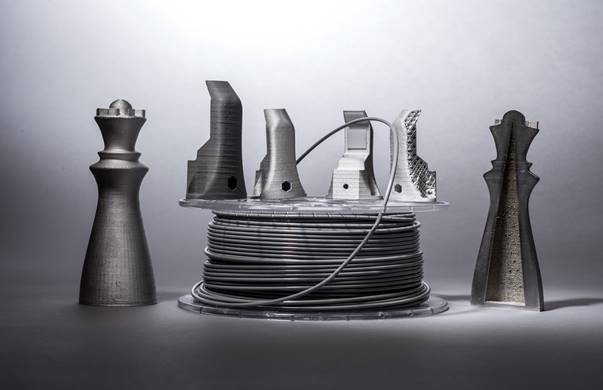In 2019 desktop 3D printing continued its onward march towards greater adoption. And, by now, it doesn’t look all that different from the industrial space, in may ways.
New Products from Familiar Faces
After introducing a much-needed new 3D printer in 2018, MakerBot released an upgrade to that same system in 2019. The METHOD X improved upon the METHOD with the ability to 3D print ABS plastic due to an increased build chamber temperature of up to 100°C.
Ultimaker announced not one but two new 3D printers, the S3 and the S5, the latter of which could be purchased as part of a bundle that includes the Air Manager. Though the Air Manager has not yet enabled the S5 to receive green certification from UL, it does prevent some emissions from the printer and improves temperature and moisture control within the build chamber. The bundle also includes the Material Station, meant to preserve filaments and pre-feed the material to the printer for continuous 3D printing.
The S3 is an upgrade to the Ultimaker 3, released a year-and-a-half before, with a larger build volume, automatic bed leveling, a larger nozzle and the ability to 3D print with abrasive composite materials (to a certain extent).
After making some headway in industrial 3D printing, wide format printer-maker Mimaki announced the development of a desktop 3D printer. Created by the Japanese firm along with South Korean 3D printer manufacturer Sindoh, the 3DFF-222 desktop 3D printer has a build volume of 8.27″ x 7.87″ x 7.67″, semi-automatic bed leveling, a built-in camera for remote monitoring, a HEPA filter and uses PLA filament cartridges.
Prusa managed to so far survive the desktop 3D printing bubble and has announced Prusa Mini printer for $349. Even at that price, the machine features automatic bed leveling, a color LCD screen and a not-too-small build volume of 18×18×18 cm (7.1 x 7.1 x 7.1 in). Given the reputation of the company, it will be a high built quality printer with a low desktop footprint.
This year, we almost lost another mainstay of the desktop space when news came out that Aleph Objects was near the end of its financial rope. At the zero hour, the firm was bought out by Fargo Additive Manufacturing Equipment, allowing the LulzBot line of 3D printers to survive. Oddly enough, the company announced both the release of a bioprinter and expansion into Europe this year. Perhaps it was hoping to save itself with these two moves or maybe it had spread itself too thin with them. Either way, this author is happy to see that Aleph Objects revived.
In contrast, Formlabs has continued to grow quickly, making its first acquisition; releasing a bio-specific 3D printer, the Form 3B; and introducing the newest version of its SLA technology in the form of the Form 3 and Form 3L. The new printers feature what Formlabs calls low force stereolithography, in which a new optics system directs a laser directly perpendicular to the build plane, and objects are released from the screen with less force, allowing for finer print details, bigger parts, less errrors and lighter support structures.
Developed with Dow Chemical, German RepRap’s Liquid Additive Manufacturing is available in the new L320 LAM 3D printer and can print with silicone materials.
Other established companies in the desktop space that announced new printers this year included BCN3D, Lumi Industries, FELIXprinters, Raise3D, German RepRap, Dremel, gCreate and Photocentric.
Another interesting development that occurred over the course of the year was that XYZprinting said that it is focusing on industrial technology. This came despite the fact that it had pumped up the space through the sale of low-cost printers, selling in the range of 40,000 units per year after they came to market. In fact, the subsidiary of Taiwan’s massive contract manufacturer New Kinpo had released countless varieties of these desktop machines, including combination scanning-and-printing systems, “full-color” printers (this author never saw one in person), and several beginner-level printers.
Despite the shift, XYZprinting will continue to support its entry-level printers and even introduced the da Vinci Color 5D, which includes a 2D inkjet paper printer and a laser engraver along with full color 3D printing capabilities.
Industrial Desktop
This year continued the trend of “desktop” 3D printers eating away at the less expensive end of the extrusion space. Companies already working on creating industrial-level fused filament fabrication systems released new products, while other desktop firms entered the fray.
3ntr exists in the former category and, this year, it announced the Spectral 30 3D printer, capable of 3D printing advanced plastics like PEEK, PEI (ULTEM) and PEKK. The printer features four nozzles that can reach 500° C, a print bed that reaches 300° C, and a chamber that reaches 250° C, as well as liquid cooling, automated plate leveling, and dryers meant to protect the filament as its printed.
Roboze was alongside 3ntr in this space, releasing what was one of the first FFF 3D printers outside of Stratasys to use PEEK, PEI, and PEKK. This year, the company unveiled the ARGO 350, named for its 350X300X300mm build volume. The build chamber can reach 180°C, while the double extruder can reach 450°C. Roboze also introduced the ARGO 500, with a 500 x 500 x 500 mm build volume, and extruder that can reach 550°C. Both feature Roboze’s beltless system, designed for greater precision, in addition to two filament dryers, automatic bed leveling and filament loading.
Though Italian and established, like the aforementioned, WASP is newer to the world of high-temperature 3D printing. However, the new Delta WASP 2040 TECH is capable of printing with PEEK through the use of a nozzle that can reach at least 380°C and a stainless steel, insulated print chamber. Also worth noting is that, unlike the aforementioned, the printer uses pellets, rather than filament.
3DGENCE is also new to high-temperature printing, but, at Formnext this year, introduced its INDUSTRY 4F20 system, which can print with PEEK and PEI, along with a specialty developed soluble support. The dual extruder can reach 500° C, while the chamber and builplate can reach 180° C. The Polish company has designed a unique quick-change modular printing system with three interchangeable modules and the new printer includes filters for control of ultrafine particles and VOCs.
Materials and Accessories
While desktop 3D printers increasingly blend the line between “entry-level” and “industrial”, the materials and accessories associated with those systems has seen some evolution. Just about every major chemical company is now on the scene, so rather than break down every feedstock they announced this year, we’ll focus on one project engaged in by the largest chemical company: BASF.
BASF 3D Printing Solutions has developed Ultrafuse 316L, a stainless steel particles bound within a nylon matrix. The material can be used to print a green object that can then be turned into a brown part via catalytic debinding before sintering in a furnace, resulting in a 316L stainless steel part with 90 percent metal content. The material is being offered on the market via iGo3D, MatterHackers, and Ultimaker.
Structur3D released a desktop injection molding system dubbed Inj3ctor, meant for filling plastic molds with silicones, urethanes, epoxies or composites to create an injection molded one-off.
This author hopes that the field of filament recycling takes off sooner rather than (too) later. For that reason, it’s exciting to see filament recycler manufacturer Felfil release new accessories, including the Felfil Spooler, for automatically wrapping filament around a spool. Similarly, 3devo, a Dutch maker of filament recyclers, introduced the AIRID, used to dry plastic filament before use.
A new iteration of the ColorPod, originally released several years ago, makes it easier to convert an open desktop 3D printer into a binder jetting system. The DualBox ColorPod—made up of a plexiglass box with two HP inkjet cartridges, and all of the hardware and electronics necessary to integrate it into an existing cartesian printer—can be wound around the axis of a stepper motor. This is less of an accessory and more of a project reminiscent of the maker days of ‘ol.
That wasn’t all that happened in the desktop world this year, but hopefully, it’s enough to hold you over through the holidays until a new year of 3D printing in 2020.
Join the discussion of this and other 3D printing topics at 3DPrintBoard.com.
Subscribe to Our Email Newsletter
Stay up-to-date on all the latest news from the 3D printing industry and receive information and offers from third party vendors.
You May Also Like
Precision at the Microscale: UK Researchers Advance Medical Devices with BMF’s 3D Printing Tech
University of Nottingham researchers are using Boston Micro Fabrication‘s (BMF) 3D printing technology to develop medical devices that improve compatibility with human tissue. Funded by a UK grant, this project...
3D Printing Webinar and Event Roundup: April 21, 2024
It’s another busy week of webinars and events, starting with Hannover Messe in Germany and continuing with Metalcasting Congress, Chinaplas, TechBlick’s Innovation Festival, and more. Stratasys continues its advanced training...
3D Printing Webinar and Event Roundup: March 17, 2024
It’s another busy week of webinars and events, including SALMED 2024 and AM Forum in Berlin. Stratasys continues its in-person training and is offering two webinars, ASTM is holding a...
3D Printed Micro Antenna is 15% Smaller and 6X Lighter
Horizon Microtechnologies has achieved success in creating a high-frequency D-Band horn antenna through micro 3D printing. However, this achievement did not rely solely on 3D printing; it involved a combination...
































